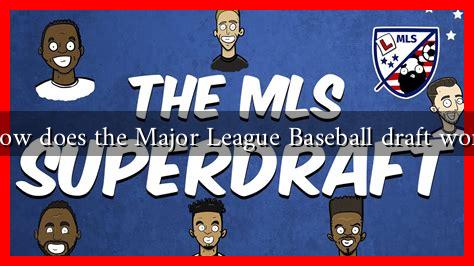-
Table of Contents
How Does the Major League Baseball Draft Work?
The Major League Baseball (MLB) Draft is a pivotal event in the world of baseball, serving as the primary mechanism through which teams acquire new talent. This annual event not only shapes the future of franchises but also impacts the careers of countless young athletes. Understanding how the MLB Draft works is essential for fans, aspiring players, and anyone interested in the business of baseball.
The Structure of the MLB Draft
The MLB Draft typically takes place in June and consists of a series of rounds in which teams select eligible amateur players. The draft is structured as follows:
- Number of Rounds: The draft usually consists of 20 rounds, although this number can vary based on league decisions.
- Eligibility: Players eligible for the draft include high school graduates, college players, and players from junior colleges. International players can also be drafted under specific conditions.
- Order of Selection: The draft order is determined by the previous season’s standings, with the worst-performing teams receiving the earliest picks.
. This system is designed to promote competitive balance.
Draft Pool and Signing Bonuses
Each year, a draft pool is established, which is the total amount of money that teams can spend on signing bonuses for their draft picks. The pool is calculated based on the picks each team has and the slot values assigned to those picks. Here are some key points regarding the draft pool:
- Slot Values: Each pick in the draft has a designated slot value, which represents the recommended signing bonus for that selection. For example, the first overall pick in 2023 had a slot value of approximately $9 million.
- Over and Under Slot Signing: Teams can choose to sign players for more or less than the slot value. However, exceeding the total draft pool can result in penalties, including the loss of future draft picks.
Strategies and Considerations
Teams employ various strategies during the draft, influenced by their current roster needs, player evaluations, and long-term goals. Some common strategies include:
- Best Player Available: Teams may opt to select the highest-rated player regardless of position, believing that talent will ultimately prevail.
- Positional Needs: Teams may prioritize positions where they lack depth, such as pitching or infielders, to build a more balanced roster.
- Signability: Some teams consider a player’s willingness to sign with them, especially if they are projected to be difficult to sign due to college commitments or high asking prices.
Case Studies: Successful Draft Picks
Several players have become household names after being selected in the MLB Draft, showcasing the potential impact of this event. Notable examples include:
- Mike Trout: Drafted 25th overall by the Los Angeles Angels in 2009, Trout has since become one of the best players in baseball history, earning multiple MVP awards.
- Stephen Strasburg: The Washington Nationals selected Strasburg first overall in 2009. He played a crucial role in the Nationals’ 2019 World Series victory.
- Jacob deGrom: Drafted in the ninth round by the New York Mets in 2010, deGrom has emerged as one of the premier pitchers in the league, winning multiple Cy Young Awards.
Conclusion
The MLB Draft is a complex and strategic process that plays a critical role in shaping the future of baseball teams. By understanding the structure, strategies, and implications of the draft, fans and aspiring players can appreciate the significance of this event. As teams continue to refine their approaches to scouting and player development, the draft will remain a cornerstone of Major League Baseball’s competitive landscape.
For more information on the MLB Draft, you can visit the official MLB website at MLB Draft.





